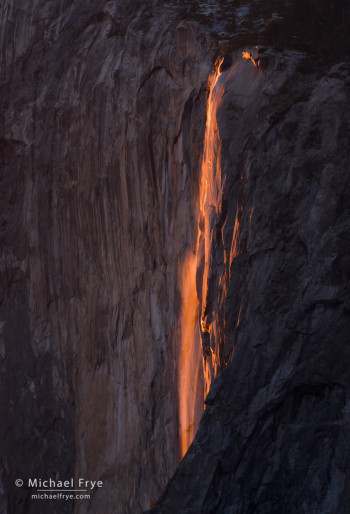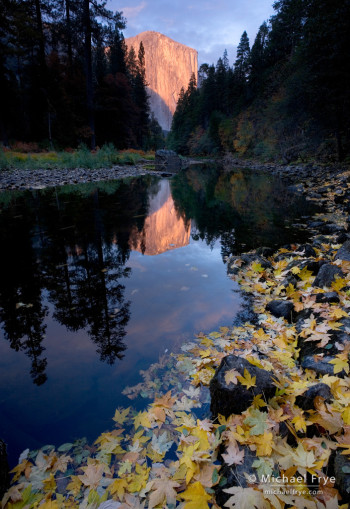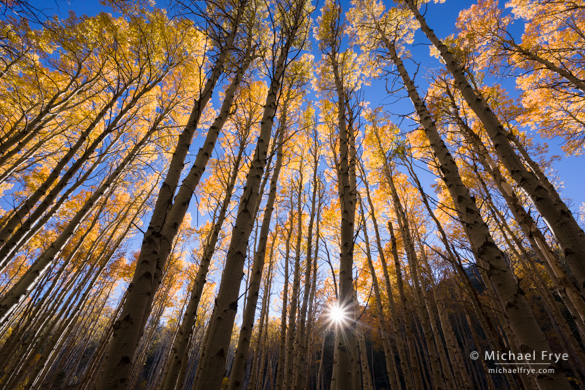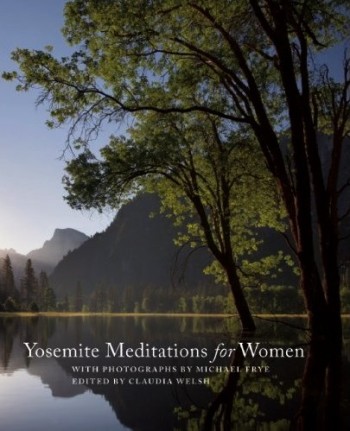by Michael Frye | Jan 31, 2013 | Yosemite Photo Conditions

Low water, but ideal light on Horsetail Fall, February 20th, 2012
It’s almost February, so naturally I’ve been getting a lot of questions about Horsetail Fall. My thoughts about the best time to photograph Horsetail haven’t changed since I wrote this post last year: basically it’s February 16th to 23rd, or maybe a little beyond that.
This window was confirmed by my observations in 2012. There wasn’t much water in the fall last year, but we had a string of clear days, which allowed me to closely watch the light, and I think that February 16th to 23rd window is about right. You can, of course, take good photographs before or after that window; I’m talking about ideal light.
That ideal light requires clear skies to the west at sunset, something no one can predict at this point. And for good photographs the waterfall has to be flowing. Overall we’ve had a lot more rain and snow than last year, and Horsetail is flowing now. January, however, has been pretty dry, and there’s no precipitation in the forecast until at least next Wednesday. I think Horsetail will have more water this year than last, regardless of what happens over the next couple of weeks, but it would be nice to get some more snow on top of El Capitan soon to help feed Horsetail.
(more…)
by Michael Frye | Jan 23, 2013 | Composition, Vision and Creativity

El Capitan and the Merced River, autumn, Yosemite NP, CA, USA
Depth can be a powerful tool in photography. Our medium is two-dimensional, but a sense of depth, an illusion of space and distance, can make the viewer feel like part of the scene, and literally and figuratively add another dimension to a photograph.
A Common Formula
This image of El Capitan follows a common formula for creating a three-dimensional effect in landscape photographs: find an interesting foreground (preferably with some leading lines), get the camera low and close to that foreground, and use a wide-angle lens.
A wide-angle lens by itself can’t create a sense of depth. Wide-angle lenses make things look smaller, and therefore more distant, but if everything looks small and distant there’s no sense of depth. The 3-D effect only happens when you put the wide-angle lens close to something in the foreground. That proximity makes the foreground look big, but things in the background still look small. The optics create an exaggerated size difference between near and far objects, and our brains interpret that as depth and distance.
This wide-angle, near-far look is common today, but it wasn’t always so. Though he wasn’t the first to use this perspective, master landscape photographer David Muench popularized this technique through his many beautiful books, and a lot of people have followed his lead.
But this look has become so popular that I think landscape photographers have stopped looking for other ways to create a sense of depth, and by doing that we’ve limited our options. We owe it to ourselves and our viewers to explore other paths, and create images with depth and meaning that go beyond this one formula.
(more…)
by Michael Frye | Jan 14, 2013 | Announcements, Workshops

Aspen grove, late afternoon, Lee Vining Canyon, Inyo NF, CA, USA
If you’re not subscribed to my email list you missed the announcement of my Eastern Sierra Fall Color: Composition and Creativity Among the Aspens workshop next fall. We had such a great response to this offering that it sold out the first day! But the good news is that we decided to run a second edition of this course from October 20-23, 2013, and there are still a few spots available.
I made the accompanying photograph during the first edition of this workshop last October. We photographed this aspen grove late in the afternoon as the lowering sun backlit the yellow leaves. This was my favorite image from that spot, but I saw many interesting, unusual compositions by everyone else that afternoon, both on the back of people’s cameras and later during image reviews. You can see some of the participant’s photographs in this Flickr group.
(more…)
by Michael Frye | Jan 13, 2013 | Announcements

Yosemite Meditations for Women
My wife Claudia and I just got an advance copy of our new book, Yosemite Meditations for Women, published by Yosemite Conservancy. Claudia did a wonderful job of editing this — finding quotes, pairing them with photographs, and getting permissions from the authors. I’ll let you know when it’s available — it should be sometime next month!
— Michael Frye
by Michael Frye | Jan 5, 2013 | Announcements
The polls are closed, the votes are in, and here are my top ten photographs of 2012!
I thought last year’s response was amazing, but this year it was even better: 240 people looked through my initial selection of 50 images and posted their picks here on the blog, Facebook, Google+, and by email. A big thank you to all of you who took the time to look through these photographs and voice your opinions — I really appreciate your help with this! And thanks also to my wonderful assistant Claudia who tallied the votes.
To express our gratitude to all of you we’ve decided to give away another print to one of the voters. We assigned each person who voted a number, and used a random number generator to pick the recipient. And the winner is… Frank Field! Frank will receive a signed, numbered, matted 16×20 print of his choice from among the 50 original selections. Congratulations Frank!
So here’s the list of the ten images which received the most picks, and the number of votes they each received:
(more…)












